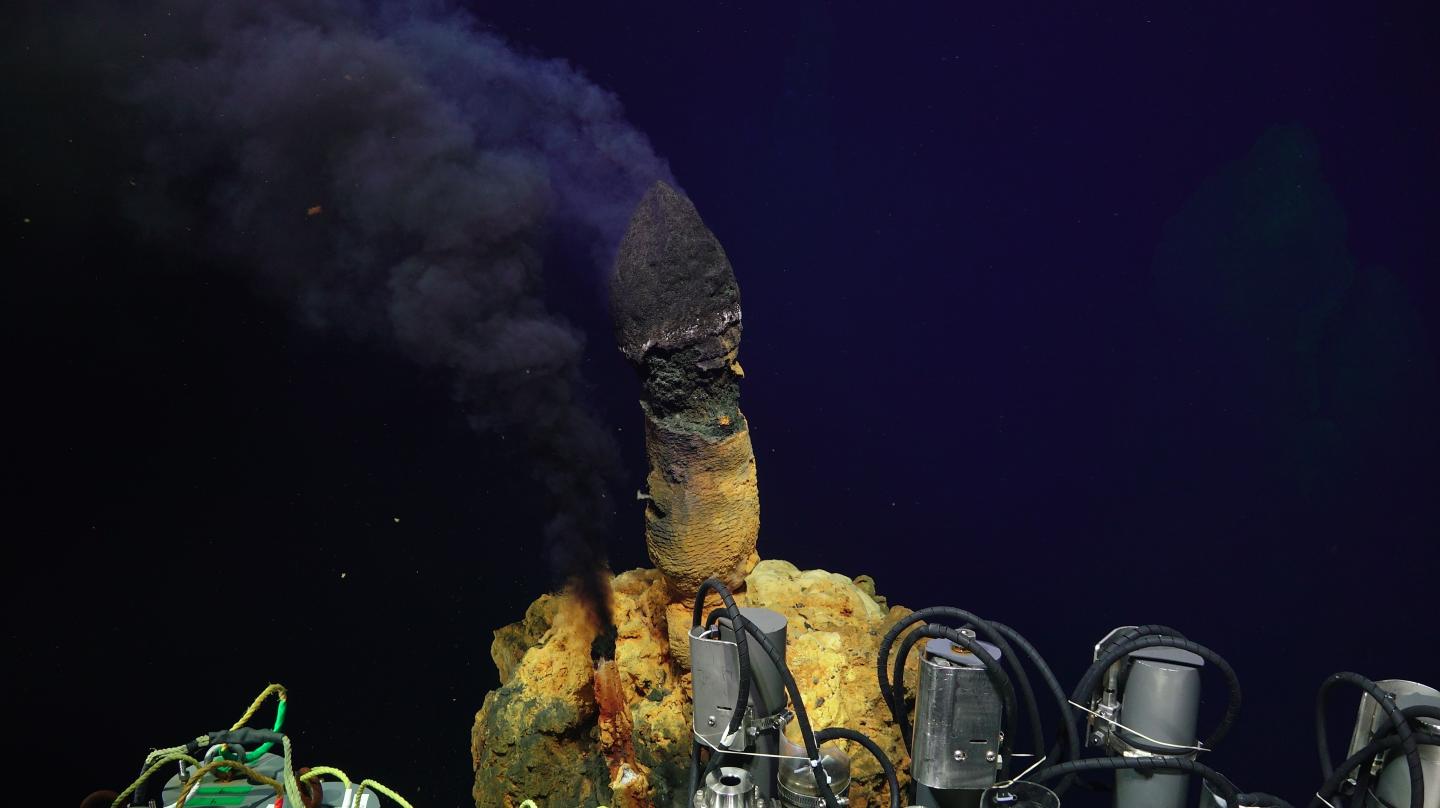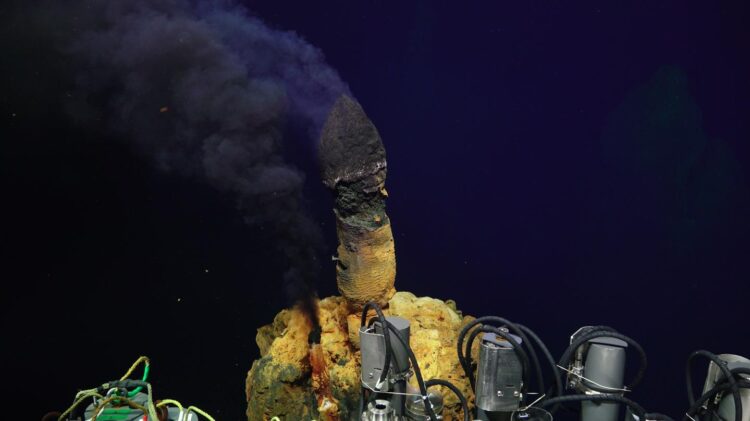
Credit: Anna-Louise Reysenbach/NSF, ROV Jason and 2018 ©Woods Hole Oceanographic Institution
Biology – Volcanic microbes
Oak Ridge National Laboratory contributed to an international study that found almost 300 novel types of microbes living near a deep sea volcano. These microbes, which could be used in biotechnology, reveal new insights about their extreme underwater environment.
Two distinct communities of heat-loving and many acid-loving microbes live near Brother’s Volcano, located about 200 miles northeast of New Zealand and 6,000 feet underwater. Known as extremophiles, these microbes thrive in water heated by magma and hydrothermal vents.
Though they live close to one another, the microbial communities reflect differences in water chemistry and temperature from geological features. In analyzing the new bacterial and archaeal families, ORNL’s Mircea Podar thinks microbes like these can help better characterize extreme environments.
“We’re heading to a point where microbes can be very informative about the environment they came from and even reflect some of the past,” Podar said. “With more data, we can use microbes as a proxy to characterize environments where traditional measurements are challenging to capture.”
Media Contact: Kim Askey, 865.576.2841, [email protected]
Image: https:/
Caption: Deep-sea hydrothermal vent chimneys on Brother’s Volcano’s northwest caldera wall create a unique environment for microbes. Credit: Anna-Louise Reysenbach/NSF, ROV Jason and 2018 ©Woods Hole Oceanographic Institution
Image: https:/
Caption: Magmatic hydrothermal venting at the cone site in Brother’s Volcano creates a microbial community distinctly different from those at nearby geological features. Credit: Anna-Louise Reysenbach, NSF, ROV Jason and 2018 ©Woods Hole Oceanographic Institution
Image: https:/
Caption: ORNL contributed to the international study, which was led by Portland State University, and leveraged submersible technology from Woods Hole Oceanographic Institute. Credit: Anna-Louise Reysenbach
Buildings – The unbreakable bond
Researchers at Oak Ridge National Laboratory developed self-healing elastomers that demonstrated unprecedented adhesion strength and the ability to adhere to many surfaces, which could broaden their potential use in industrial applications.
Elastomers, commonly used in the construction industry as sealants, are known for their durability. However, they can develop cracks when exposed to certain environments, leading to air and water leaks.
In a study, ORNL researchers used a blend of a self-healing polymer with curable elastomers to produce a series of self-healable and highly adhesive materials. The team proved that these elastomers can self-repair in ambient temperatures and conditions, as well as underwater, with their adhesive force only minimally impacted by surface dust.
“These tough elastomers can be made simply and efficiently through a scalable process, enabling a wider range of uses for the building, automotive and electronics industries,” ORNL’s Diana Hun said.
Media Contact: Jennifer Burke, 865.414.6835, [email protected]
Image: https:/
Caption: ORNL researchers produced self-healable and highly adhesive elastomers, proving they self-repair in ambient conditions and underwater. Credit: ORNL/U.S. Dept. of Energy
Modeling – Mapping the flood
A new tool from Oak Ridge National Laboratory can help planners, emergency responders and scientists visualize how flood waters will spread for any scenario and terrain.
The Two-dimensional Runoff Inundation Toolkit for Operational Needs, or TRITON, leverages the power of modern supercomputing to quickly create detailed flood forecasts based on meteorology, hydrology, terrain and surface conditions.
Free and available for use, TRITON can be downloaded in formats compatible with standard computer systems and with advanced architectures such as ORNL’s Summit supercomputer. Running the model on Summit’s modern architecture speeds processing by 40 times compared to conventional high-performance computing.
“The ultimate aim of this model is to support operational inundation forecasting for a range of applications, from infrastructure safety to national security,” said ORNL’s Shih-Chieh Kao who leads the project. “Understanding how a flood wave will propagate across a region or city enables appropriate planning and response.”
Media Contact: Kim Askey, 865.576.2841, [email protected]
Video: https:/
Image: https:/
Caption: The TRITON model provides a detailed visualization of the flooding that resulted when Hurricane Harvey stalled over Houston for four days in 2017. Credit: Mario Morales-Hernández/ORNL, U.S. Dept. of Energy
###
Media Contact
Sara Shoemaker
[email protected]
Original Source
https:/
Related Journal Article
http://dx.





